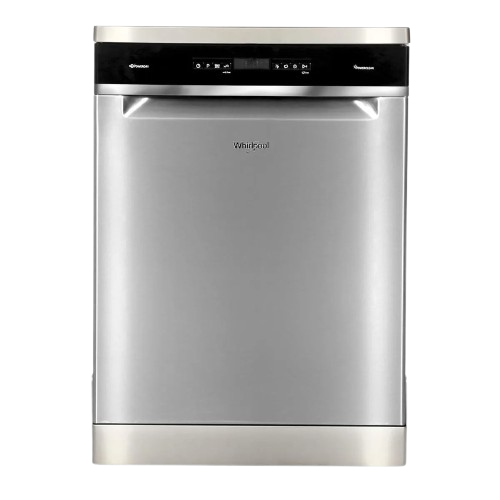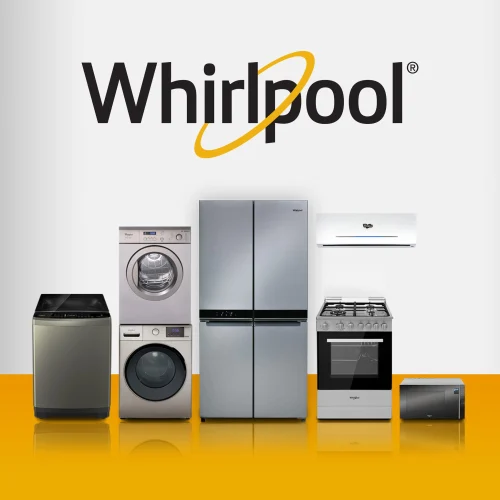Brand Overview
Brand:
Whirlpool
Parent Company:
Whirlpool Corporation
Core Categories:
Consumer Durables
Market Context at Entry (1995)
- Liberalization had opened the Indian market.
- Domestic brands like Godrej, Voltas, Kelvinator, and BPL dominated refrigerators.
- LG and Samsung had just entered; premium competition was beginning.
- Washing machine penetration was still low.
- Indian market demanded:
- Robust products for tropical conditions
- Affordable pricing
- Reliable after-sales service
- Energy-efficient appliances
Marketing Mix (4Ps)
Product Strategy
Pricing Strategy
- Maintained a mass premium positioning:
- More affordable than LG/Samsung for many models.
- More aspirational than Voltas Beko, Haier, or Godrej.
- Relied heavily on product-led value differentiation rather than deep discounts.
- Large presence in EMI finance schemes for broader accessibility.
- Participated aggressively in seasonal sales and e-commerce discounts.
Promotion Strategy
Brand Values Communicated:
- Simplifying everyday life.
- Innovative features tuned for Indian homes.
- Durability and care.
- Early 2000s campaigns: “Whirlpool, Whirlpool!” jingle became highly recognizable.
- Focused on homemakers as primary influencers.
- Television-led advertising for years; moved to digital aggressively after 2017.
- Used brand ambassadors like Kajol and Ajay Devgn for strong family connect.
- Partnered heavily with Amazon, Flipkart, and regional festivals to push seasonal sales.
Distribution Strategy
- Extensive dealer network across India:
- Presence in over 28,000 retail outlets.
- Available at:
- National chains: Reliance Digital, Croma, Vijay Sales
- Traditional independent retailers
- E-commerce platforms: Amazon, Flipkart, Tata Cliq.
- Expanded into Tier 2, 3, and 4 cities early, unlike many foreign players.
- Strengthened after-sales service network significantly post-2010.
Challenges & Responses
| Challenges | Whirlpool's Response |
| Korean rivals' strong early growth (LG, Samsung) | Focused on Indianized products (power stability, hard water washing) |
| Price pressure in entry segments | Built solid semi-automatic range and invested in local manufacturing |
| Late entry into AC market | Leveraged existing service network, promoted inverter-first strategy |
| Need for product premiumization | Launched Intellifresh refrigerators, inverter washers, smart connectivity features |
| Low visibility in niche categories (dishwashers, ovens) | Steady expansion post-2020 with urban positioning |
The Most Important Products That Drove Growth
| Product | Launch Period | Impact |
| Direct Cool Refrigerators (Single-door) | Late 1990s | Core mass-market offering, capitalized on Kelvinator legacy of "cooling expert." |
| Frost-Free Refrigerators (Double-door) | Early 2000s | Expanded into mid-premium households; focused on freshness, power savings. |
| Semi-Automatic Washing Machines | Late 1990s | Entry-level mass segment; quick adoption in Tier 2-3 households. |
| Fully Automatic Top-Load Washing Machines | Early 2000s | Became one of India's top 3 fully automatic players; easy-to-use features appealed to Indian homemakers. |
| 6th Sense Technology (sensor-based appliances) | 2005 onwards | Built strong product differentiation across refrigerators and washers. |
| Microwave Ovens | 2010 onwards | Entered kitchen appliance segment, promoted simple Indian cooking functionality. |
| Inverter Air Conditioners (newest entry) | Post 2018 | Entered air conditioner market with focus on inverter efficiency and Whirlpool brand trust. |
| Dishwashers (Premium urban segment) | 2020 onwards | Quietly expanding in niche but growing urban market post-COVID. |
Consumer Perception & Emotional Connect
- Perceived as:
- Reliable and easy-to-use household brand.
- Known for cooling expertise (legacy from Kelvinator).
- Durability, service, and middle-class trust.
- A "value-for-comfort" brand — neither flashy nor bargain basement.
- Known for understanding the Indian homemaker's practical needs.
Competitive Landscape
| Segment | Key Competitors |
| Refrigerators | LG, Samsung, Godrej, Haier, Voltas Beko |
| Washing Machines | LG, IFB, Samsung, Haier, Bosch |
| Microwaves | LG, Samsung, IFB, Panasonic |
| Air Conditioners | Voltas, LG, Daikin, Blue Star |
| Dishwashers | Bosch, IFB, LG, Samsung |
Whirlpool's Edge:
- Long experience in refrigeration.
- Strong familiarity with Indian consumer behavior.
- Consistently built trust in washing machines and refrigerators.
- "Every Day Care" product-led positioning.
Impact & Market Performance
- Refrigerators: Among Top 3 brands in both direct cool and frost-free segments.
- Washing Machines: Strong Top 3 player across semi-automatic and fully automatic.
- Microwaves: Stable urban presence; not dominant but consistent.
- Air Conditioners: Growing; modest share but expanding.
- FY23 estimated revenue: ₹5,000–5,500 crore.
- Three manufacturing units in India: Faridabad, Pune, and Puducherry.
Key Learnings from Whirlpool's India Playbook
- Understand the Indian homemaker deeply.
- Focus on product adaptation to Indian conditions — voltage fluctuation, hard water, tropical cooling.
- Build long-term presence in Tier 2–3 India early.
- Avoid high-profile marketing battles — instead invest in service, reliability, and value-driven innovations.
- Use acquisitions (Kelvinator) as springboard for faster entry.
Summary
Whirlpool's India journey is one of steady, careful expansion built on local insight and product reliability. While not always as aggressive as LG or Samsung, it quietly built deep roots with Indian families, especially in refrigeration and washing machines. Its practical, "care for everyday life" positioning resonates with India's large middle-class audience. With newer bets in ACs, dishwashers, and smart appliances, Whirlpool continues to stay relevant in the evolving Indian home.











